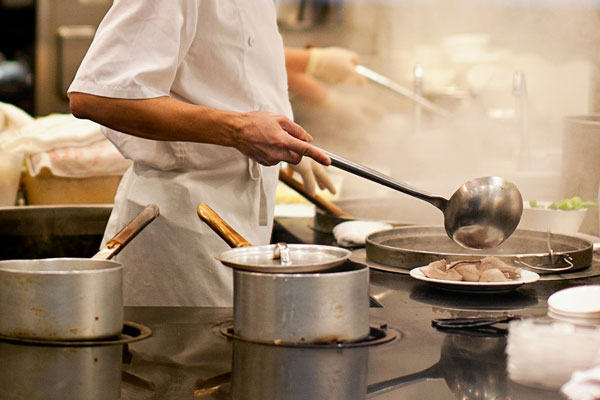Maintaining Food Safety Standards Amid Seasonal Turnover
Across the country, summer seems to bring on more than just an influx of business in foodservice operations. It also tends to bring an influx and an exodus of employees. As seasoned employees head out for vacations or move on, new hires and seasonal staff fill in, often with minimal experience. This constant churn can create gaps in food safety practices at exactly the time when warm weather increases the risk of foodborne illness. Being ready for the staffing challenges of summer all comes down to proactive planning, smart training, and reinforcing that food safety culture we often talk about.
When new employees are coming in quickly, your food safety training process needs to be efficient, consistent, and easy to deliver. Create a structured onboarding checklist that includes short, clear training on critical food safety topics: temperature control, cross-contamination, handwashing, and cleaning procedures. Make sure you have solid, job-specific SOPs (Standard Operating Procedures) for food handling that you can share with new hires. Then, once they are hired and trained, make sure you follow up to confirm they understand your policies and procedures by using a brief on-the-job quiz or hands-on demonstration.
Use visual aids, such as posters or infographics, in prep areas to reinforce key practices. Better yet, build a short training video or find your favorite video online to use and show it to new hires on their first day. If you’re not an instructor for one of the several food safety training programs available on the market, consider becoming one – they have videos and other resources that you can build into your training program. Remember that with any training, repetition is key. This is especially true for new hires who are consuming a lot of information in the first few weeks on the job. Don’t assume a one-time message will stick.
The more complicated your systems, the easier it is for something to slip. Look for ways to streamline your processes, such as using color-coded cutting boards and utensils to prevent cross-contamination. I can’t tell you the number of foodservice operations where I have seen these boards in use, but the color doesn’t really mean anything. In other words, they had good intentions by purchasing the color-coded cutting board system but didn’t really implement the use of the colors within their system, and thus, anything goes! Place thermometers and sanitizing logs in visible, easy-to-access locations. Don’t create artificial barriers that will prevent new hires and seasoned employees from doing the food safety tasks you expect. After all, when tools and expectations are clear and accessible, it’s much easier for new staff to succeed.
…By reinforcing that everyone plays a role, you make food safety a shared value, not just a task to be completed.
In a fast-paced kitchen, waiting until a six-month or yearly performance evaluation to address a food safety mistake is too late. Instead, designate a shift supervisor or manager to spot-check food safety practices throughout the day—handwashing, holding temps, sanitizer buckets, etc. Correct gently and immediately. Use mistakes as teaching moments, not just compliance failures.
Pair new hires with experienced team members who can model and reinforce good practices. These mentors can help answer questions, catch mistakes early, and build confidence in new employees.
If you have been working on creating that food safety culture where food safety is part of every shift, not just a training module, training for food safety becomes a bit less problematic. Some ways you can start doing this or continue to reinforce this are by beginning each shift with a quick safety huddle, a two-minute reminder of one key food safety point. Always encourage staff to speak up when they see something unsafe; all team members play a role, not just managers and supervisors. And be sure to include food safety behaviors in performance feedback, even for seasonal staff. By reinforcing that everyone plays a role, you make food safety a shared value, not just a task to be completed.
The reality of summer staffing challenges doesn’t have to mean lower food safety standards. With a proactive process, clear communication, and a strong culture, your team—new and “old” can keep serving safe food all year long. Risk Nothing.
READ MORE POSTS
What is the Greatest Threat to Food Safety?
What is the Greatest Threat to Food Safety?
Food Safety Considerations for the “New Way” of Dining, Part II – Back-of-house
In our first blog this month, we discussed the importance of front-of-house practices as we emerge from the pandemic this summer and into fall. Making your guests feel safe will be an important point as we welcome them back to our establishment. The safer they feel, the more likely they are to revisit and this could, in turn, be a competitive advantage for your business.
Food Safety Considerations for the “New Way” of Dining
Spring is my favorite time of year, as we head out of the winter months, welcome warmer weather, and increase the daylight hours. As such, we turnover a new leaf and welcome new life as our grass, trees, and perennials come out of dormancy. This year as the Coronavirus vaccine continues its roll out and we welcome a third vaccine onto the market this morning, perhaps this spring we are turning over a ‘new leaf’ in a much more profound way, as we see light at the end of the Coronavirus tunnel.
Developing Good Food Safety Habits
Good habits and habit development are something that has fascinated me for several years. If you’ve attended any the training programs or presentations that my colleagues and I have conducted through our Center for Food Safety in Child Nutrition Programs, you’ve likely heard me opine about the importance of habits and how habits are created. Many times, in foodservice operations we wonder why our staff don’t follow the food safety practices we have established in our operation. Perhaps they don’t wash their hands when they are required, perhaps they just don’t use the proper method of handwashing, or perhaps we find that they don’t complete our HACCP logs as often as our program dictates should occur. And while we can stomp our feet and say “it is their job, they should just do it”, it really isn’t that simple. We can’t order people to change, although if we could, business and human resources would be so much simpler.










